Chiang Mai University demonstrates comprehensive engagement in co-operative planning for climate change disasters through systematic collaboration with government agencies at both local and regional levels. The university addresses increasing climate vulnerability and extreme weather events by integrating climate mitigation and climate adaptation strategies with practical disaster risk reduction measures aligned with the Paris Agreement commitments.
Regional Climate Change Planning Partnership
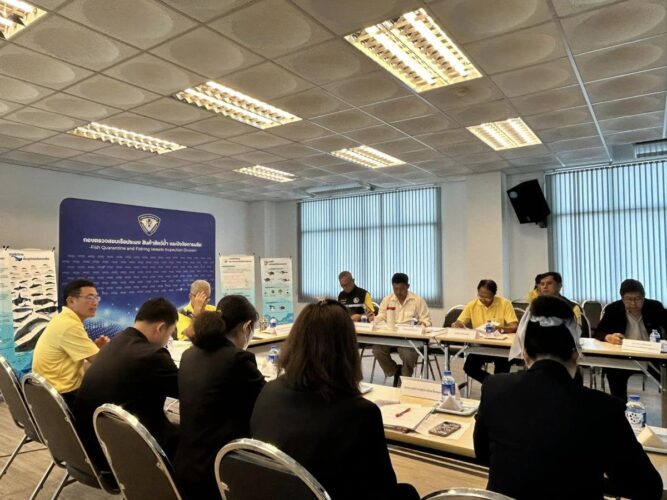 |
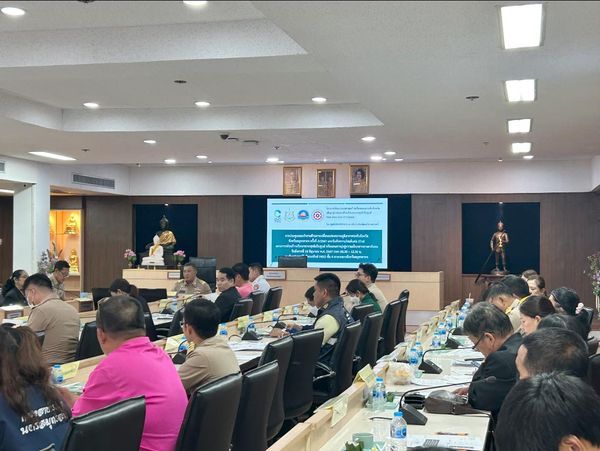 |
Provincial Net-Zero Carbon Planning Collaboration
In June 2024, Chiang Mai University participated in the Provincial Working Group on Climate Change for Samut Sakhon Province (Meeting 2/2567 on June 18, 2024). University experts from the College of Maritime Studies and Management contributed to drafting the provincial net-zero carbon emissions plan, integrating climate modeling expertise with government planning processes to address greenhouse gas emissions reduction and coastal climate vulnerability.
Local Flood Disaster Analysis and Planning
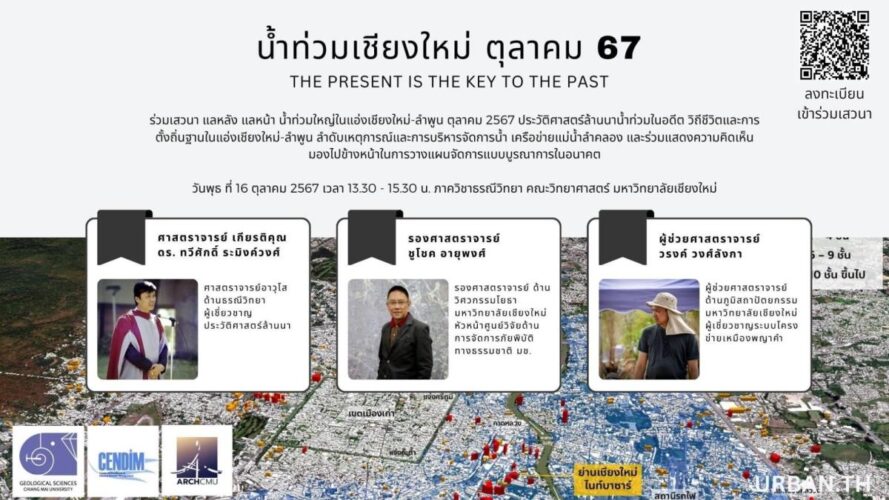
Chiang Mai-Lamphun Basin Flooding Response Initiative
On October 16, 2024, the university organized a seminar on the major flooding in the Chiang Mai-Lamphun basin at the Department of Geology, Faculty of Science. Distinguished experts including Professor Emeritus Dr. Taweesak Ramingwong analyzed historical flood patterns and traditional settlement practices. This collaborative session enabled government agencies and local communities to develop integrated disaster planning approaches for future extreme weather events and potential population displacement.
Comprehensive Water Resource Disaster Management
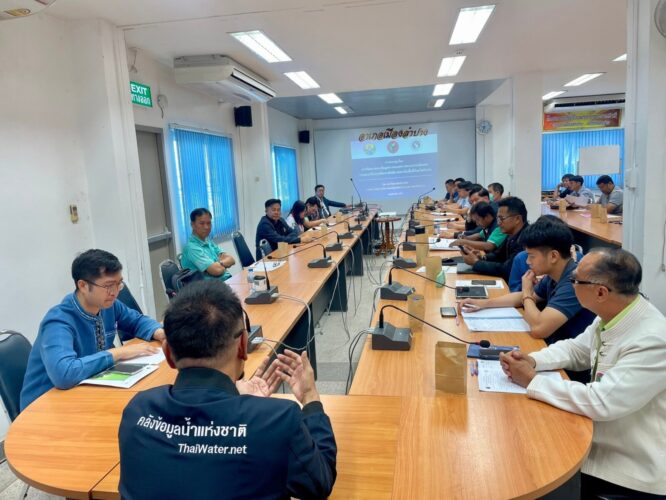 |
 |
Lampang Province Multi-District Weir Assessment Project
The university’s Water Resource Management Center leads a cooperative project with Lampang Provincial Administrative Organization covering all 13 districts throughout 2024. This initiative addresses both drought and flood risks through systematic weir assessment and efficiency enhancement planning. The collaboration involves the Department of Disaster Prevention and Mitigation, Royal Irrigation Department, Department of Water Resources, and multiple local administrative organizations to enhance water security and agricultural resilience.
Multi-Stakeholder Climate Risk Reduction
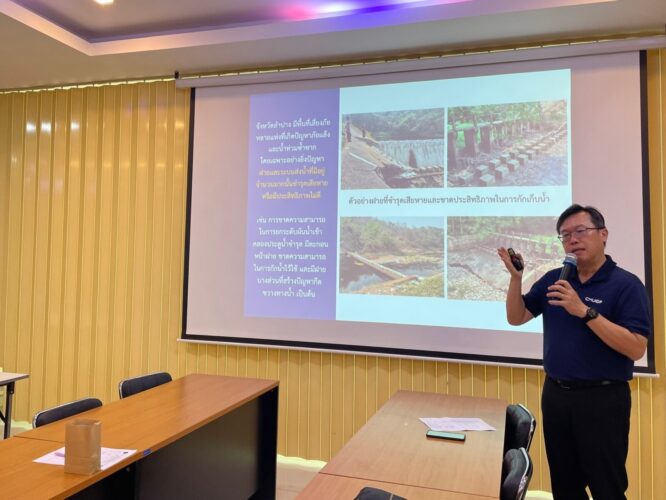 |
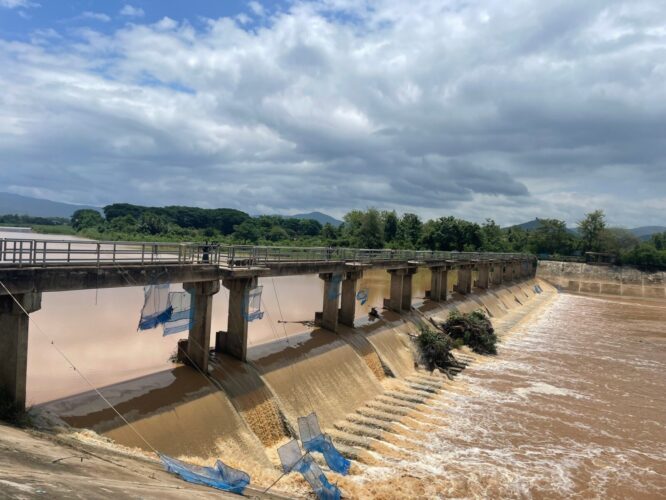 |
Community-Based Disaster Preparedness Framework
The Lampang project demonstrates genuine multi-level cooperation by integrating technical expertise from government agencies with community participation. Local administrative organizations, foundations, charitable organizations, volunteers, and community members jointly identify climate risk areas and develop sustainable solutions. This approach ensures vulnerable populations receive support for both immediate disaster response and long-term climate adaptation planning, addressing the climate emergency through inclusive disaster risk reduction strategies.
Integrated Climate Resilience Planning
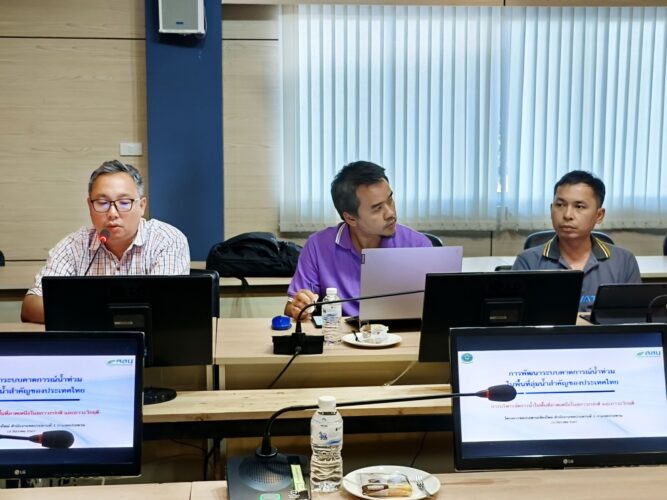 |
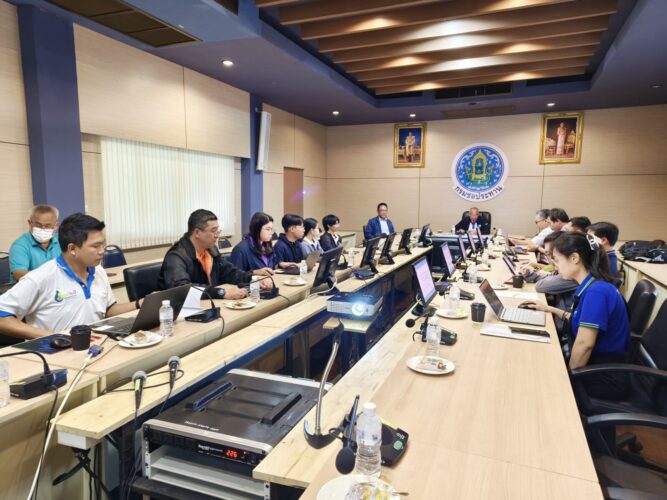 |
Cross-Sectoral Coordination for Disaster Management
The university facilitates coordination among the Provincial Natural Resources and Environment Office, Harbor Department, and regional authorities to develop comprehensive early warning systems. This multi-stakeholder framework combines scientific climate modeling with practical disaster management, enabling systematic planning for climate-related displacement scenarios. The collaborative approach strengthens climate resilience by ensuring all stakeholders contribute to climate justice and sustainable disaster preparedness across northern Thailand.
Conclusion
Through five distinct collaborative initiatives spanning regional policy development, local disaster response, comprehensive resource management, community-based preparedness, and cross-sectoral coordination, Chiang Mai University actively contributes to cooperative climate change disaster planning. These partnerships successfully integrate academic expertise with government coordination and community engagement, positioning the university as a leading institution in developing practical solutions for climate adaptation and disaster risk reduction across Thailand.
Source :
-
- Forum on the October 2024 Major Flood in the Chiang Mai–Lamphun Basin
- Flood Forecasting Consultation between CENDiM, HII, and Chiang Mai Irrigation
- Samut Sakhon Climate Working Group Meeting 2/2024 and Consultation on the Draft Net-Zero Emissions Plan
- CMU’s Knowledge and Innovation Alliance for Sustainable Flood and Drainage Solutions
- Lampang Weir Assessment and Improvement Information System Project
- Lampang Urban Water Support Project

